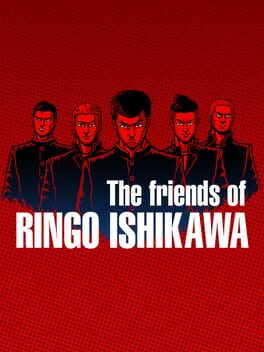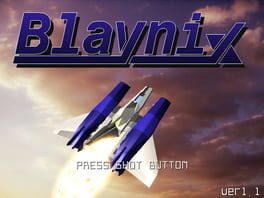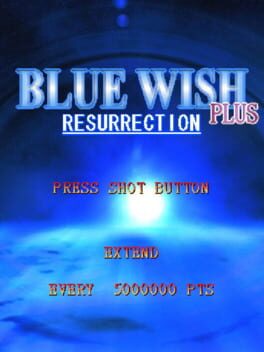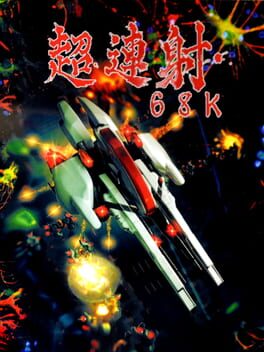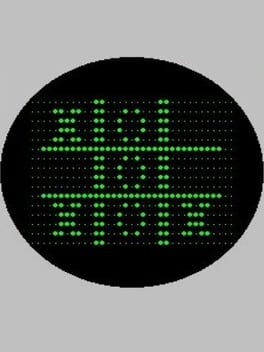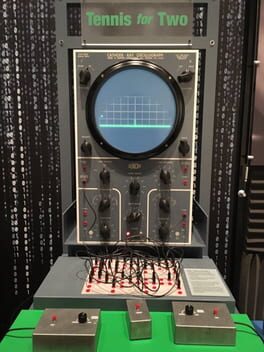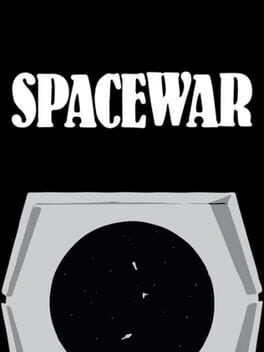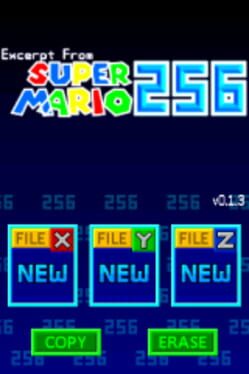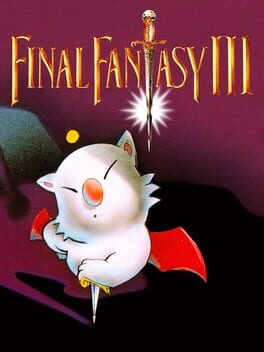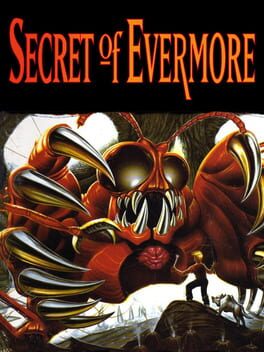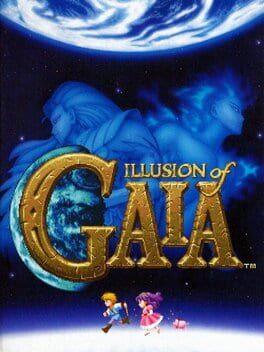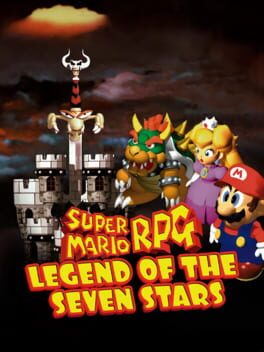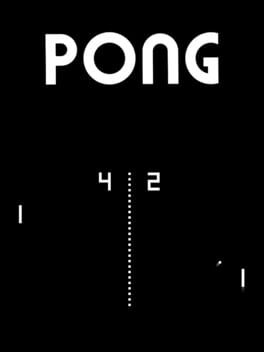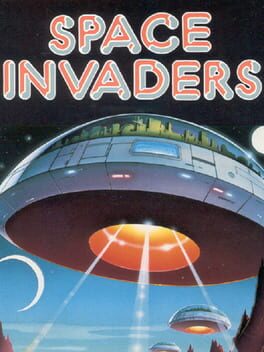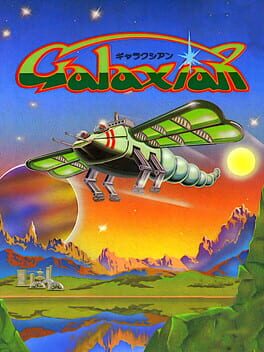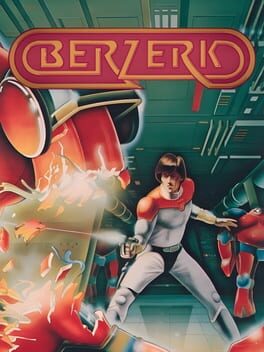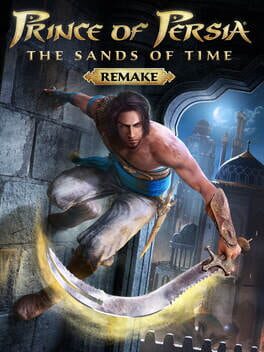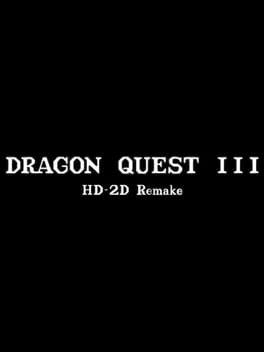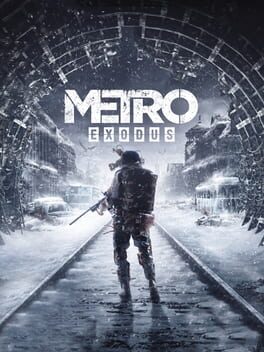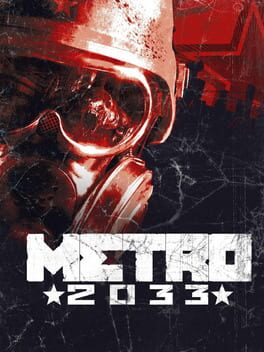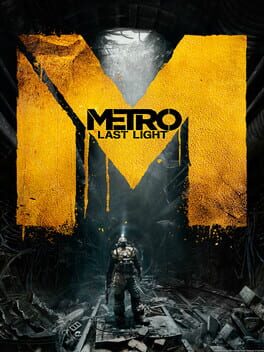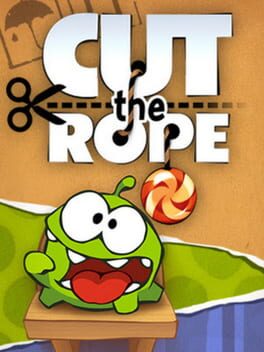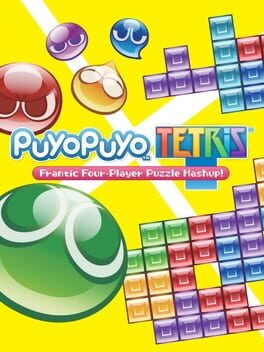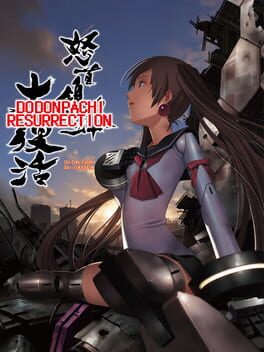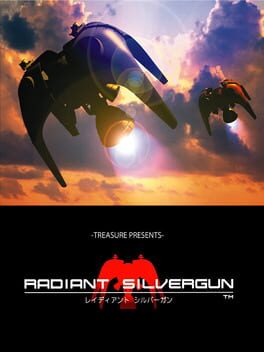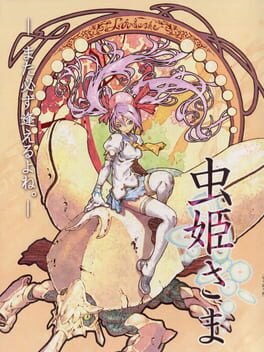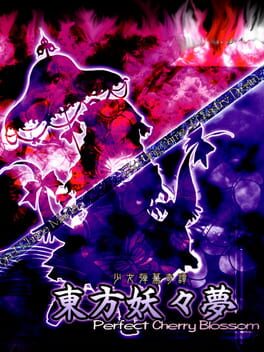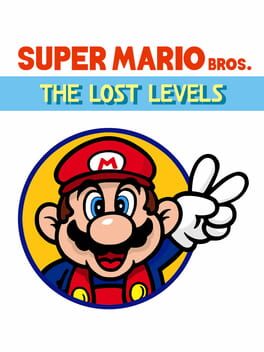LowImpactSex
163 reviews liked by LowImpactSex
The Beginner's Guide
2015
Rabi-Ribi
2016
The essence of bullet hell is embodied by the flow state, the merging of action and reaction into a cohesive whole. Unburdened by self-consciousness and doubt, the player becomes one with the work, a metatextual intertwining between the self-insert protagonist and the player themselves. Weaving effortlessly between spirals of malignant neon, one brushes against certain death versus overwhelming odds, limited not only by the mechanical functions of the game, but by the stress inherent to seeing a wave of fluorescent fire flung in your direction. Success is found not in fighting the game’s systems, but instead in embracing the chaos and cacophony of bullet hell: Seeing bullets rain down on your self-insert of choice, and cutting a path through the onslaught, with obscene firepower, unbroken grace, or by sheer determination.
Hypothetically, the experience of a shoot 'em up is antithetical to a metroidvania; One encourages complete adherence to the rules, the other constantly pushes you to go beyond the expectations of the game, the former rewards finding surefire paths to a concrete goal, the latter is defined by meandering detours in the service of securing a step forward on a path. It’s a dichotomy that builds an uneven foundation. When paired together, both sides struggle to become the defining “face” of the work, as the focus inevitably wavers between the explorative core of a metroidvania, and the breakneck action of an STG.
It’s a nightmarish endeavor to create something that scratches the itch of two divergent genres, and when I initially started Rabi-Ribi, that ingrained conflict was immediately apparent. For the first handful of hours, my experience was relegated to enjoying a perfectly fine, if mortifyingly shameless, exploration game. Hardline three out of five… you know the type. But after crashing against the initial wave of bosses, delving into the ways of Big Combo, and making a difficult decision to drop the difficulty to normal… Something clicked. It wasn’t until around Aruraune’s boss fight, half way through the game, that Rabi-Ribi's elegance in design finally revealed itself.
The hyperfocus… The loss of anxiety… The full acceptance of the game’s mechanics… At the halfway point, Rabi-Ribi re-attunes itself, subtly shifting from a smart metroidvania to an ingenious STG. As if fully accepting this genre shift, the final fights of the game embrace the concept of flow state, celebrating it as the final, ultimate end-goal of the genre, beyond victory, beyond aesthetic value, beyond even being “good” at the game. Your reward isn’t a high-score, breathtaking GCs, or even further mastery of the game, as much as those are all parts to find joy in. Your reward is the sense of perfect alignment with the game: Of full focus, complete immersion, and functioning at your peak doing something you love, regardless of winning or losing. It’s the soul of bullet hell condensed to a beautiful ending fight.
Rabi-Ribi is a game I struggle to recommend with a straight face: the main character might as well be the protagonist of the Daicon IV Opening Animation, But With AGunFairy; that, and the very-subtle-and-not-at-all-on-the-nose Nekopara allusions, do wonders in souring public perception toward the game. It's deeply, deeply upsetting that the most beloved representative of two of my favorite genres is going to be a game I’ll be mocked to the ends of the Earth for loving… But I adore this game. It’s flawed, for sure, and your tolerance for Anime™ has to be decently high to not be rightfully filtered for the abundance of otaku-bait character designs, but looking past that, on a pure mechanical level, Rabi-Ribi represents what I love in two genres that exist at odds with each other.
Hypothetically, the experience of a shoot 'em up is antithetical to a metroidvania; One encourages complete adherence to the rules, the other constantly pushes you to go beyond the expectations of the game, the former rewards finding surefire paths to a concrete goal, the latter is defined by meandering detours in the service of securing a step forward on a path. It’s a dichotomy that builds an uneven foundation. When paired together, both sides struggle to become the defining “face” of the work, as the focus inevitably wavers between the explorative core of a metroidvania, and the breakneck action of an STG.
It’s a nightmarish endeavor to create something that scratches the itch of two divergent genres, and when I initially started Rabi-Ribi, that ingrained conflict was immediately apparent. For the first handful of hours, my experience was relegated to enjoying a perfectly fine, if mortifyingly shameless, exploration game. Hardline three out of five… you know the type. But after crashing against the initial wave of bosses, delving into the ways of Big Combo, and making a difficult decision to drop the difficulty to normal… Something clicked. It wasn’t until around Aruraune’s boss fight, half way through the game, that Rabi-Ribi's elegance in design finally revealed itself.
The hyperfocus… The loss of anxiety… The full acceptance of the game’s mechanics… At the halfway point, Rabi-Ribi re-attunes itself, subtly shifting from a smart metroidvania to an ingenious STG. As if fully accepting this genre shift, the final fights of the game embrace the concept of flow state, celebrating it as the final, ultimate end-goal of the genre, beyond victory, beyond aesthetic value, beyond even being “good” at the game. Your reward isn’t a high-score, breathtaking GCs, or even further mastery of the game, as much as those are all parts to find joy in. Your reward is the sense of perfect alignment with the game: Of full focus, complete immersion, and functioning at your peak doing something you love, regardless of winning or losing. It’s the soul of bullet hell condensed to a beautiful ending fight.
Rabi-Ribi is a game I struggle to recommend with a straight face: the main character might as well be the protagonist of the Daicon IV Opening Animation, But With A
Plok
1993
Super Mario Bros.
1985
The flagpoles at the end of each stage are a perfect expression of the design philosophy that underlies the whole game. The flagpole encourages you to reach for the top and rewards players that manage to pull it off with extra points. This reward never becomes stale because the game always finds new and slightly more difficult variations to this simple challenge that often smartly encompass the elements already introduced in the stage itself. But these penultimate tests of skill remain mostly optional and don’t hinder less experienced players from finishing the stage itself. It is perfectly alright to only catch the flagpole at the bottom (turns out it is even better when you speedrun the game) – you’ll still advance to the next stage like everybody else without carrying over any disadvantages for the rest of your playthrough. Even the occasional eruption of fireworks is completely unrelated to how well you performed. The game just occasionally celebrates you for making it one step further.
Despite Super Mario Bros. being the most important and influential game of its time, it is remarkable just how much its design philosophy differs from most platformers that came after it. Sidescrollers on the NES were predominantly about creating difficulty by asking an increasing level of precision from the player while at the same time punishing their mistakes more severely the further they came. This means that you either need expert reflexes or minute memorization of the game to make it through to the end and the vast majority of players won’t acquire either skill without repeating the same obstacles over and over again. Of course, learning through repetition is not problematic in and of itself. Only when combined with limited lives and a general lack of checkpoints or other save options does the habit of placing the most unforgiving challenges towards the end turn many of these games into a more frustrating and unfair than motivating and rewarding experience. In effect, the most difficult challenges become the same ones that players have the fewest chances to practice and experiment with, which completely undermines the idea of learning through repetition.
Although Super Mario Bros. works largely with the same elements mentioned above (finite continues, no permanent checkpoints, increasing demand of precision with a growing number of deadly obstacles), the act of mastering its challenges has far less to do with memorizing enemy placements or optimizing a perfect series of inputs than the impressive speedrun history of the game may suggest. Instead, Nintendo designed the game from the ground up to make the process of learning through repetition – in other words: the game itself as you experience it – as fun and engaging as possible.
The level design often offers multiple routes in almost every course. For example, the path on the ground can present a bigger gauntlet of enemies while the way forward above has more difficult platforming ahead. Hidden passages underground or in the sky might let you skip a tricky section of the level, but perhaps also make you miss out on a valuable power-up. Players have to make real decisions on how to progress, and their choices are likely to change on later attempts depending on their familiarity with the game. However, this is rarely because one option turns out to be clearly better than the others. Rather, the different decisions usually correspond to a player’s level of experience, which means they are primarily between a risky but more rewarding options against a safer but slower approach. Take a basic enemy encounter with a Koopa: It can be avoided, immobilized, or turned into a projectile against other enemies. While the last strategy sounds most tempting, it can also sometimes quite literally backfire. Even the power-ups adhere to this trade-off between risk and reward. The Mushroom and Fire Flower are mostly there to aid less experienced players by giving them extra health or an easy option to deal with opponents. But at no point are they required to beat the game. On the contrary, playing as little Mario has its own advantages like a smaller hitbox or being able to use tiny passages.
The process of active decision making is complemented by Mario’s movement, which allows for great flexibility and even split-second adjustments mid air. You can progress through the game at breakneck speed as well as slowly and methodically and it feels great to race past a course that posed a real challenge a couple of tries earlier. The wide range in Mario’s mobility also makes it pretty likely that you stumble upon small or big secrets fairly regularly, even after dozens of attempts. Every Green Pipe and breakable block not only functions as part of the obstacle course, but also might hide a new short-cut or power-up. Even the simple act of miss-timing a jump can turn into a discovery when you suddenly hit an invisible block. Especially the early levels hide alternative routes that allow you to completely bypass most of the challenges and you only have to beat eight of the 32 levels once you found out about the warp zones, no glitches required.
In the end, the whole point of the flagpole is to give players another opportunity to demonstrate their mastery of the game without punishing those that have not reached that level of skill yet. Super Mario Bros. trusts you to figure out your own way to have fun with it, while still carefully guiding you towards a better understanding of its mechanics and teaching you everything you need to know. This balance occurs so rarely that I could not help but be impressed by how seemingly effortlessly Nintendo found it this early.
__________________
More Super Mario reviews
Super Mario Bros. 3
Super Mario Bros. Deluxe
More NES reviews
Castlevania
Despite Super Mario Bros. being the most important and influential game of its time, it is remarkable just how much its design philosophy differs from most platformers that came after it. Sidescrollers on the NES were predominantly about creating difficulty by asking an increasing level of precision from the player while at the same time punishing their mistakes more severely the further they came. This means that you either need expert reflexes or minute memorization of the game to make it through to the end and the vast majority of players won’t acquire either skill without repeating the same obstacles over and over again. Of course, learning through repetition is not problematic in and of itself. Only when combined with limited lives and a general lack of checkpoints or other save options does the habit of placing the most unforgiving challenges towards the end turn many of these games into a more frustrating and unfair than motivating and rewarding experience. In effect, the most difficult challenges become the same ones that players have the fewest chances to practice and experiment with, which completely undermines the idea of learning through repetition.
Although Super Mario Bros. works largely with the same elements mentioned above (finite continues, no permanent checkpoints, increasing demand of precision with a growing number of deadly obstacles), the act of mastering its challenges has far less to do with memorizing enemy placements or optimizing a perfect series of inputs than the impressive speedrun history of the game may suggest. Instead, Nintendo designed the game from the ground up to make the process of learning through repetition – in other words: the game itself as you experience it – as fun and engaging as possible.
The level design often offers multiple routes in almost every course. For example, the path on the ground can present a bigger gauntlet of enemies while the way forward above has more difficult platforming ahead. Hidden passages underground or in the sky might let you skip a tricky section of the level, but perhaps also make you miss out on a valuable power-up. Players have to make real decisions on how to progress, and their choices are likely to change on later attempts depending on their familiarity with the game. However, this is rarely because one option turns out to be clearly better than the others. Rather, the different decisions usually correspond to a player’s level of experience, which means they are primarily between a risky but more rewarding options against a safer but slower approach. Take a basic enemy encounter with a Koopa: It can be avoided, immobilized, or turned into a projectile against other enemies. While the last strategy sounds most tempting, it can also sometimes quite literally backfire. Even the power-ups adhere to this trade-off between risk and reward. The Mushroom and Fire Flower are mostly there to aid less experienced players by giving them extra health or an easy option to deal with opponents. But at no point are they required to beat the game. On the contrary, playing as little Mario has its own advantages like a smaller hitbox or being able to use tiny passages.
The process of active decision making is complemented by Mario’s movement, which allows for great flexibility and even split-second adjustments mid air. You can progress through the game at breakneck speed as well as slowly and methodically and it feels great to race past a course that posed a real challenge a couple of tries earlier. The wide range in Mario’s mobility also makes it pretty likely that you stumble upon small or big secrets fairly regularly, even after dozens of attempts. Every Green Pipe and breakable block not only functions as part of the obstacle course, but also might hide a new short-cut or power-up. Even the simple act of miss-timing a jump can turn into a discovery when you suddenly hit an invisible block. Especially the early levels hide alternative routes that allow you to completely bypass most of the challenges and you only have to beat eight of the 32 levels once you found out about the warp zones, no glitches required.
In the end, the whole point of the flagpole is to give players another opportunity to demonstrate their mastery of the game without punishing those that have not reached that level of skill yet. Super Mario Bros. trusts you to figure out your own way to have fun with it, while still carefully guiding you towards a better understanding of its mechanics and teaching you everything you need to know. This balance occurs so rarely that I could not help but be impressed by how seemingly effortlessly Nintendo found it this early.
__________________
More Super Mario reviews
Super Mario Bros. 3
Super Mario Bros. Deluxe
More NES reviews
Castlevania
Shin Megami Tensei III: Nocturne es un juego especial dentro de la franquicia por lo nuevo que trajo jugablemente, aunque también resulta llamativo en narrativa. En este juego tomaremos el rol de un estudiante de secundaria que, junto con otras personas, es testigo del fin del mundo y el nacimiento de uno nuevo conocido como Vortex World, un mundo transicional que espera la llegada de un ser poderoso que le dé una forma definitiva según sus ideales. A lo largo de nuestra aventura viajaremos por este mundo postapocalíptico en busca de respuestas sobre lo ocurrido, viendo también cómo los sobrevivientes del mundo anterior forman sus propios ideales respecto a cómo debería ser el nuevo, siendo la mayoría bastante extremistas, por lo que recae en nosotros apoyar alguna de estas facciones o tomar un camino distinto dependiendo de lo que se alineen mejor con nuestra manera de pensar.
En cuanto al apartado jugable, Nocturne introduce el Press Turn Battle System, un sistema de combate que premia el uso de las debilidades de los enemigos y los ataques críticos, dándonos un turno extra si acertamos uno de dichos ataques, el cual podemos usar para curar, potenciar alguna característica de nuestro equipo, debilitar a los enemigos o seguir atacando. Así, con una buena estrategia y un equipo equilibrado, seremos capaces de vencer a los enemigos sin que llegue su turno. Eso sí, los enemigos también pueden aprovechar este sistema, y nosotros podemos perder turnos si fallamos o usamos ataques que no les afectan (aunque ellos pueden perderlos también por los mismos motivos), así que te pueden dejar muy mal parado si no sabes cómo contrarrestar esta desventaja. Si bien todo lo que mencioné del sistema de combate es fantástico, tiene un gran problema: los enemigos no son muy inteligentes y suelen cometer los mismos errores, como sería repetir los mismos ataques una y otra vez, esto hace que el juego se vuelva demasiado fácil si sabemos cómo explotar sus fallos.
Con todo y sus defectos, Nocturne es un juego que ofrece una experiencia enriquecedora en muchos aspectos, no solo por lo que ya he mencionado, sino también por su atmósfera, siendo una perfecta para un mundo lleno de demonios y peligros, explorando tanto lugares cotidianos que han sido destruidos o abandonados por la influencia demoníaca, tales como hospitales o parques, así como también locaciones sobrenaturales llenas de elementos extraños, como figuras geométricas con tintes diabólicos, teniendo como únicos habitantes algunas almas del antiguo mundo o demonios. Si te gustan los juegos que abordan temas filosóficos sobre el destino del mundo, que tienen un sistema de combate por turnos dinámico y que te sumergen en una atmósfera muy bien lograda, Nocturne es el juego ideal para ti. Por cierto, agradezco mil veces que en el HD Remaster pueda escoger a gusto las habilidades que quiero heredar a mis demonios, no quiero repetir la experiencia de estar entrando y saliendo del menú de fusiones hasta tener el resultado que quiero.
En cuanto al apartado jugable, Nocturne introduce el Press Turn Battle System, un sistema de combate que premia el uso de las debilidades de los enemigos y los ataques críticos, dándonos un turno extra si acertamos uno de dichos ataques, el cual podemos usar para curar, potenciar alguna característica de nuestro equipo, debilitar a los enemigos o seguir atacando. Así, con una buena estrategia y un equipo equilibrado, seremos capaces de vencer a los enemigos sin que llegue su turno. Eso sí, los enemigos también pueden aprovechar este sistema, y nosotros podemos perder turnos si fallamos o usamos ataques que no les afectan (aunque ellos pueden perderlos también por los mismos motivos), así que te pueden dejar muy mal parado si no sabes cómo contrarrestar esta desventaja. Si bien todo lo que mencioné del sistema de combate es fantástico, tiene un gran problema: los enemigos no son muy inteligentes y suelen cometer los mismos errores, como sería repetir los mismos ataques una y otra vez, esto hace que el juego se vuelva demasiado fácil si sabemos cómo explotar sus fallos.
Con todo y sus defectos, Nocturne es un juego que ofrece una experiencia enriquecedora en muchos aspectos, no solo por lo que ya he mencionado, sino también por su atmósfera, siendo una perfecta para un mundo lleno de demonios y peligros, explorando tanto lugares cotidianos que han sido destruidos o abandonados por la influencia demoníaca, tales como hospitales o parques, así como también locaciones sobrenaturales llenas de elementos extraños, como figuras geométricas con tintes diabólicos, teniendo como únicos habitantes algunas almas del antiguo mundo o demonios. Si te gustan los juegos que abordan temas filosóficos sobre el destino del mundo, que tienen un sistema de combate por turnos dinámico y que te sumergen en una atmósfera muy bien lograda, Nocturne es el juego ideal para ti. Por cierto, agradezco mil veces que en el HD Remaster pueda escoger a gusto las habilidades que quiero heredar a mis demonios, no quiero repetir la experiencia de estar entrando y saliendo del menú de fusiones hasta tener el resultado que quiero.
The Quest of Ki
1988
A very frustratingly fun game!
The Quest of Ki by Namco is a very difficult platforming puzzle game involving a very fragile player heroine that easily gets killed by anything.
The objective of the game is to navigate around the floor and collect the key to open the door to the next level, and all of this must be done within the allotted time. If the timer runs out you'll lose a life.
The punishing difficulty of the game comes from the way how you control the player character: The game heavily relies on her precise movements, feather falling, and her ability to continuously levitate upwards for as long as the jump button is held down. The are no means of fighting back other than avoiding the enemies and projectiles altogether.
Thing is, she's very weak and easily gets stun-locked if you're not careful.
• If you run too fast and hit a wall, you get stun-locked as she does her crouching-down-while-holding-her-head-in-pain animation for one second.
• If you levitate too high and hit the ceiling, you get stun-locked and helplessly watch her slowly descend straight down to the floor and does the same animation as mentioned above once landed.
• If you run too fast, levitate and hit a wall, she slowly descends down in the same fashion as mentioned above.
• During stun-locked, you're very vulnerable to anything and there's no way to move away from danger until the stun animation is finished.
• Hilariously, just by touching spikes, enemies or projectiles by 1 pixel can instantly kill you.
With these in mind, you can now imagine why the game is tough.
Each levels are varied containing specific set of enemies, traps, and projectiles. Her weakness makes navigating around the level extremely hard as anything that isn't a floor, wall, or a ceiling can kill her. Some puzzle elements would require the player to fetch certain items or careful navigation around dangerous areas to clear it.
Despite this, the game has an anti-frustration feature by removing the very enemy that killed you when you lose a life, making the next attempt easier (you only have a few extra lives, though).
There are also warp chests you can find that will instantly take you a few floors up bypassing many levels, but these warp chests are located in very risky sections of the level, so it's a reward for taking the risk.
I guess now you're probably asking "why is it even fun even though you said it's very frustrating?"
It's hard to explain, but there's a certain kind of enjoyment you'll find in ridiculously hard games like this! Most of the time the deaths are always your fault, and the devs were quite devious for placing traps in places where you least expect it. Every now and then you might get a chuckle or more for failing a lot.
Besides, this game is not meant to be taken seriously. I mean, like, the whimsical, upbeat background music says it all!
It's a 5/5 for me for its addicting and challenging puzzles, despite its quirky game mechanics. Maybe I'm that masochistic, but that's just my opinion.
(Let's see if you can finish both the main game levels AND the extra levels that has more EVIL traps ahead!)
The Quest of Ki by Namco is a very difficult platforming puzzle game involving a very fragile player heroine that easily gets killed by anything.
The objective of the game is to navigate around the floor and collect the key to open the door to the next level, and all of this must be done within the allotted time. If the timer runs out you'll lose a life.
The punishing difficulty of the game comes from the way how you control the player character: The game heavily relies on her precise movements, feather falling, and her ability to continuously levitate upwards for as long as the jump button is held down. The are no means of fighting back other than avoiding the enemies and projectiles altogether.
Thing is, she's very weak and easily gets stun-locked if you're not careful.
• If you run too fast and hit a wall, you get stun-locked as she does her crouching-down-while-holding-her-head-in-pain animation for one second.
• If you levitate too high and hit the ceiling, you get stun-locked and helplessly watch her slowly descend straight down to the floor and does the same animation as mentioned above once landed.
• If you run too fast, levitate and hit a wall, she slowly descends down in the same fashion as mentioned above.
• During stun-locked, you're very vulnerable to anything and there's no way to move away from danger until the stun animation is finished.
• Hilariously, just by touching spikes, enemies or projectiles by 1 pixel can instantly kill you.
With these in mind, you can now imagine why the game is tough.
Each levels are varied containing specific set of enemies, traps, and projectiles. Her weakness makes navigating around the level extremely hard as anything that isn't a floor, wall, or a ceiling can kill her. Some puzzle elements would require the player to fetch certain items or careful navigation around dangerous areas to clear it.
Despite this, the game has an anti-frustration feature by removing the very enemy that killed you when you lose a life, making the next attempt easier (you only have a few extra lives, though).
There are also warp chests you can find that will instantly take you a few floors up bypassing many levels, but these warp chests are located in very risky sections of the level, so it's a reward for taking the risk.
I guess now you're probably asking "why is it even fun even though you said it's very frustrating?"
It's hard to explain, but there's a certain kind of enjoyment you'll find in ridiculously hard games like this! Most of the time the deaths are always your fault, and the devs were quite devious for placing traps in places where you least expect it. Every now and then you might get a chuckle or more for failing a lot.
Besides, this game is not meant to be taken seriously. I mean, like, the whimsical, upbeat background music says it all!
It's a 5/5 for me for its addicting and challenging puzzles, despite its quirky game mechanics. Maybe I'm that masochistic, but that's just my opinion.
(Let's see if you can finish both the main game levels AND the extra levels that has more EVIL traps ahead!)
18 lists liked by LowImpactSex
by MiyaKa |
67 Games
by Dalaamclouds |
139 Games
by dleo |
245 Games
by JedPressgrove |
5 Games
by ListMaster909k |
68 Games
by ListMaster909k |
327 Games
by maradona |
110 Games
by Xator_Nova |
33 Games




